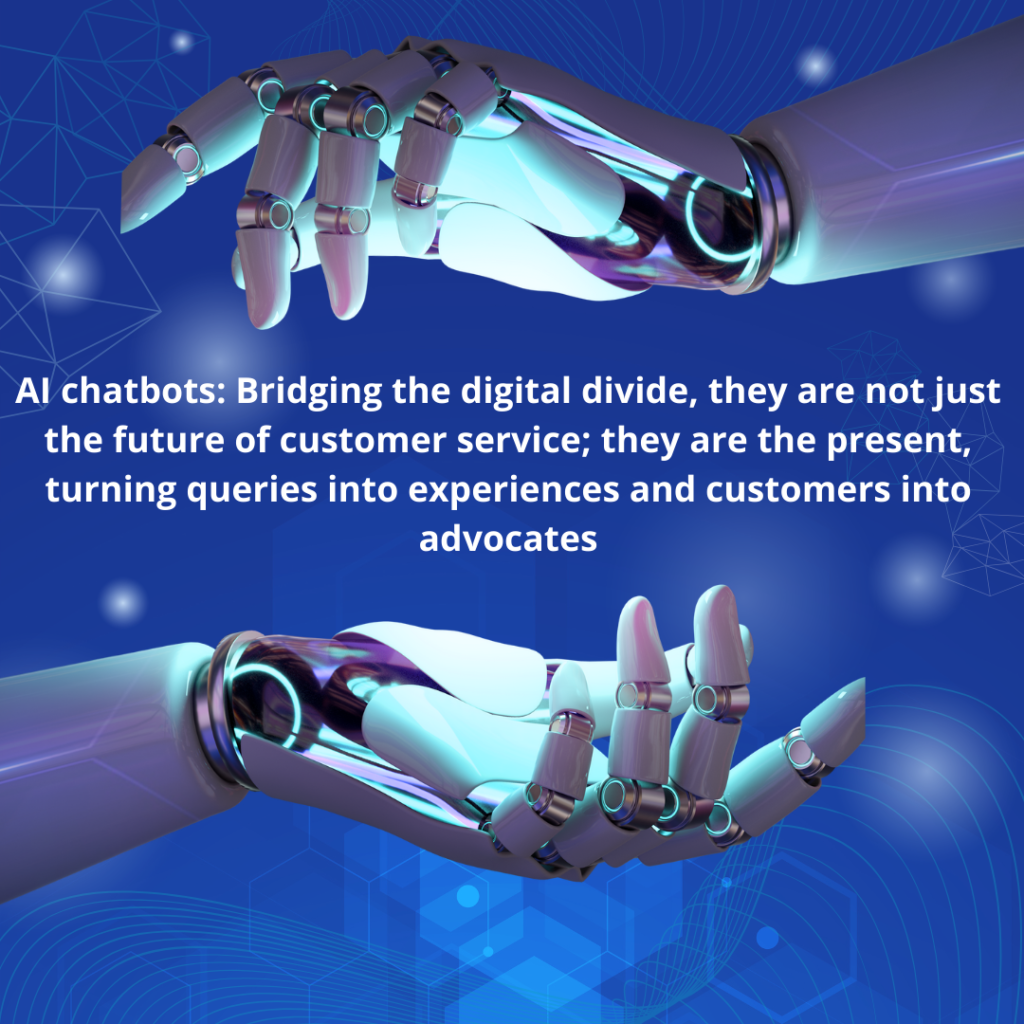The Ultimate Guide to Implementing AI Chatbot in Your Business
Introduction to AI and Chatbots in Business
AI’s arrival in business operations marks a considerable change in businesses. It is especially effective for improving customer service and efficiency. As AI can process and analyze data very fast. It has paved the way for chatbots in many businesses. These AI-powered chatbots are changing how companies talk to their customers. They give real-time, 24/7 help without the limits of humans.
Chatbots use natural language processing and machine learning. They can understand and respond to user inquiries in a conversational way. This tech advance lets businesses automate routine customer service tasks. It cuts the workload on human agents and ensures customers get instant responses to their queries. Chatbots streamline customer service. They also cut costs by reducing the need for big customer service teams.
Also, AI chatbots collect and analyze customer data. They let businesses learn about customer preferences and behavior. It helps tailor products, services, and communication strategies to meet customer needs better. This enhances customer satisfaction and loyalty. AI chatbots are not just for automation. They are strategic assets. They can change customer service and drive business growth.
The Progress of Chatbots and Their Applications
Chatbots have come a long way. They started as simple text-based response systems and became sophisticated AI-powered conversational agents. This change mirrors the remarkable evolution of AI and natural language processing. Chatbots started in the 1960s with the creation of ELIZA. It was a computer program made at MIT. It could mimic the language of a psychotherapist. This early attempt simulated human conversation. It laid the groundwork for future chatbot technology. Over the decades, AI, machine learning, and computational linguistics have greatly improved chatbots. They can now understand and process complex language, recognize speech, and learn from interactions to get better.
Today, chatbots are used in many industries. This shows their versatility and the value they bring to both businesses and consumers. In retail, chatbots are virtual shopping assistants. They guide customers through product choices. They give recommendations based on preferences and help with transactions. The banking and financial services industry uses chatbots. They use them for customer inquiries, account management, and financial advice. They let customers do transactions and access services easily from their devices.
In healthcare, chatbots are changing patient engagement. They offer health advice, schedule appointments, and provide medication reminders. This improves access to information and streamlines processes. Additionally, in education, chatbots are virtual tutors and support agents. They help students with learning and with questions. They make the educational experience better.
The applications of chatbots go beyond then these. Now, chatbots are in travel, hospitality, and entertainment. They are also in other industries. Each chatbot is tailored to meet specific needs and improve user experiences. Chatbots can be used in many ways. This shows their versatility and growing importance. They are vital in a digital-first world. Instant, efficient, and personal communication is vital there.
| Year | Chatbot Name | Description/Significance |
|---|---|---|
| 1966 | ELIZA | First chatbot, mimicking a psychotherapist. |
| 1972 | PARRY | Simulated a person with paranoid schizophrenia. |
| 1988 | Jabberwacky | Aimed to simulate natural human chat in an entertaining way. |
| 1995 | ALICE | Utilized natural language processing. |
| 2001 | SmarterChild | Accessible on SMS and instant messaging platforms. |
| 2010s | Various | Rapid development in AI and NLP technologies. |
| 2016 | Facebook Bots | Launch of Facebook Messenger’s bot platform. |
| 2020s | GPT-3 | Advanced chatbot capabilities introduced by OpenAI. |
Understanding Different Types of Chatbots
hatbots, as digital assistants, primarily fall into two categories: rule-based (flow-based) and AI-powered (open-ended), each serving distinct purposes based on their underlying technology and application.
Rule-Based Chatbots operate on a set of predefined paths and responses. They guide users through a series of options and deliver responses based on the users’ selections. These chatbots rely on a decision-tree framework, where each user choice leads to a specific outcome or set of follow-up queries. They are very effective for simple customer service tasks. These tasks have few variables. For example, booking appointments or answering FAQs. For instance, a restaurant may use a rule-based chatbot on its website to take reservations. It asks the customer to choose a date, time, and party size from set options.
AI-Powered Chatbots use natural language processing (NLP) and machine learning. They use them to understand and respond to user inputs in a more dynamic and conversational way. These chatbots can understand free-form text or speech. They are unlike their rule-based counterparts. They allow for a more natural interaction and can handle many queries without predefined scripts. AI chatbots are used in scenarios that need a deep understanding of user intent. This includes giving personalized shopping advice and helping to troubleshoot technical issues. A notable example is a customer service chatbot for an online retailer. It can interpret customer questions about product features, availability, or order status. It gives tailored responses or sends hard questions to humans.
| Type of Chatbot | Technology Used | Characteristics | Real-world Application |
|---|---|---|---|
| Rule-Based | Decision Tree | Follows a predefined path based on user choices. Limited to specific scenarios. | A restaurant’s reservation system, where customers select from given options to book a table. |
| AI-Powered | Natural Language Processing (NLP), Machine Learning (ML) | Understands and responds to free-form language. Learns over time to improve responses. | Online retail customer service, assisting with product inquiries, and troubleshooting. |
By using the strengths of both types of chatbots, businesses can offer better customer service. They can serve a wide range of user needs and preferences.
Key Considerations in Choosing an AI Chatbot for Your Business
Choosing the right AI chatbot for your business involves navigating many factors. These factors can greatly affect customer experience and efficiency. Understanding these factors can help you make an informed decision. It should align with your business objectives and customer service goals.
Omnichannel Support: In today’s interconnected world, customers interact with businesses across multiple platforms. An AI chatbot offers omnichannel support. It ensures a smooth switch and the same experience across many channels. These include web, mobile, social media, and messaging apps. For instance, a store might use a chatbot to talk to customers on Facebook Messenger. It then continues the talk via email without losing context.
Cost: The total cost of ownership encompasses not just the initial setup fees but also ongoing operational costs. Businesses should look for solutions that offer transparent pricing models. For eg. Zendesk’s AI chatbots provide a low-cost solution. The setup is simple and eliminates the need for much coding or developer resources. This can be a game-changer for small to medium-sized enterprises.
Customer Understanding: A chatbot’s ability to comprehend customer queries accurately is paramount. AI chatbots use advanced natural language processing. They can understand the meaning and emotion in customer messages. This lets them give relevant and personal responses. This ability is key for businesses like online retailers. Understanding customer questions about product features or order status can improve shopping.
Integration with Business Systems: A chatbot must give correct information and do tasks. These tasks include checking order status or booking appointments. To do this, the chatbot must connect well with existing business systems. A notable example is Football Emotion. It gives its chatbot access to inventory and order systems. This lets the chatbot provide real-time responses about product availability and order updates.
Bot-to-Human Handoffs: Despite AI advancements, some situations require human intervention. The chatbot can spot hard issues. It can then pass the chat to a human agent, along with the context. This system keeps customers from getting frustrated. This feature is key for service providers like telecoms. They may face billing or technical issues too hard for a chatbot to resolve.
| Consideration | Description | Example/Case Study |
|---|---|---|
| Omnichannel Support | Ensure the chatbot works seamlessly across various channels like websites, apps, and social media platforms. | Accor integrating Zendesk across web widget and email, planning for Facebook Messenger. |
| Cost | Consider both initial setup fees and ongoing operational costs. Look for solutions with transparent pricing models. | Zendesk’s cost-effective, no-code setup. |
| Customer Understanding | The chatbot should accurately comprehend customer queries using advanced NLP for personalized responses. | Zendesk bots understanding intent and sentiment. |
| Integration | Chatbot’s ability to pull data from business systems for accurate responses. | Football Emotion’s bot accessing inventory and order management systems. |
| Bot-to-Human Handoffs | Smooth transition from bot to human agents when complex issues arise, ensuring relevant information is passed along. | Zendesk Bots’ seamless escalation to human agents. |
Businesses can choose an AI chatbot solution by considering these factors. The solution should meet their current needs and scale with their growth. This will ensure sustained customer satisfaction and operational excellence.
Benefits of Implementing AI Chatbots
Adding AI chatbots to business operations brings many benefits. They can revolutionize customer interaction and streamline service delivery. One of the primary advantages is 24/7 customer support. AI chatbots ensure that businesses are always available to answer customer queries. They do this regardless of time zones or working hours. This enhances customer satisfaction and engagement.
Cost efficiency is another significant benefit. Chatbots automate routine inquiries and tasks. They reduce the workload on human customer service reps. This lowers operational costs. This automation allows businesses to assign their people to more complex customer service tasks. It optimizes efficiency.
Scalability is a critical advantage of AI chatbots. As businesses grow, customer inquiries increase. Chatbots can easily handle the higher volume without needing more support staff. This scalability ensures that service quality stays high. It stays high even as demand goes up and down, such as during sales or product launches.
Furthermore, AI chatbots contribute to improved customer service. Chatbots learn from each interaction using machine learning and natural language processing. They use what they learn to give better, personalized responses over time. Chatbots improve as they interact with customers. This means they get better at solving issues, leading to better service.

Case Study: Zendesk Bots and Their Impact on Customer Service
Zendesk Bots have revolutionized customer service for Accor. It is one of the world’s largest hospitality networks. Accor integrated Zendesk’s AI chatbots into its web widget and email systems. This led to a 352% faster response and a 220% quicker resolution. The bots are known for their quick setup and no-code. They allowed Accor to automate responses to common customer inquiries. This freed human agents to tackle harder issues. Zendesk’s pre-trained models are for specific industries. They cut setup time and cost. Moreover, Accor is exploring extending this seamless support to its Facebook Messenger app. It will work across all channels. This further shows the bot’s versatility. It offers a uniform experience on different platforms.
Developing Your AI Chatbot: Frameworks vs. Custom Implementation
When developing AI chatbots, businesses face a choice between utilizing frameworks like Dialogflow and pursuing custom implementations, such as those provided by OpenAI’s API. Dialogflow has a user-friendly interface. It has pre-built entities and intents. They greatly cut development time and complexity. It’s great for businesses that need to deploy quickly. It’s also good for those without much coding resources. Yet, this convenience may come at the cost of less customization and control over the chatbot’s capabilities.
Custom implementations with OpenAI’s API, on the other hand, offer greater flexibility and the potential for more sophisticated conversational capabilities. This allows businesses to tailor the chatbot. They can do it more closely to their needs. The downside is the higher barrier to entry in terms of technical skill. It also means longer development times and higher costs.
| Aspect | Frameworks (e.g., Dialogflow) | Custom Implementation (e.g., OpenAI’s API) |
|---|---|---|
| Ease of Use | User-friendly, with pre-built entities and intents for rapid deployment. | Requires more technical knowledge and custom setup. |
| Customization | May offer less customization and control over the chatbot’s capabilities. | Greater flexibility and sophistication in conversational capabilities. |
| Development Time | Significantly reduces development time and complexity. | Potentially increased development time and costs. |
| Cost | Generally cost-effective with straightforward pricing models. | Can be more expensive due to custom development and API usage fees. |
| Industry-specific Models | Comes pre-trained for specific industries, saving setup time. | Requires fine-tuning or custom training on specific data. |
| Integration | Easy to deploy across channels and integrate with external platforms. | Requires manual integration and management. |
In the end, the choice is between frameworks and custom implementations. It depends on a business’s needs, abilities, and budget. Frameworks like Dialogflow are for businesses that want speed and simplicity. Custom implementations are for those that need more control and customization.
The Future of AI Chatbots in Business
AI chatbots will greatly expand in business, transforming customer interactions and improving efficiency. As AI advances, chatbots will become smarter, having personalized conversations like humans. This progress will help businesses offer top-notch customer service anytime, boosting satisfaction and loyalty.
Advancements in language technology and machine learning will help chatbots understand context, predict customer needs, and offer proactive solutions. This will improve interactions and efficiency. Chatbots will also work with new technologies. These include augmented reality and the Internet of Things (IoT). They will use them to create new customer experiences.
In the future, AI chatbots will be crucial for customer service strategies. They will change how businesses interact with customers, improving operations and giving a competitive edge.

